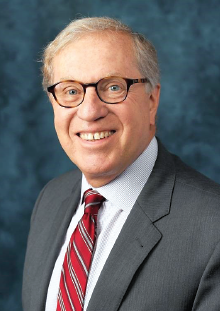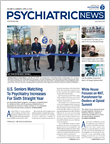Treatments for child and adolescent anxiety are safe and highly effective, with selective serotonin reuptake inhibitors (SSRIs) as a class proving effective in the acute stage and at longer-term follow-up, especially when combined with cognitive-behavioral therapy (CBT).
“We have really excellent treatments for childhood anxiety, comparable to what we see when we get a good response to stimulant medication for ADHD,” said child psychiatrist John Walkup, M.D., in an address titled “Cutting Edge Treatment for Anxiety Disorders” at the American Academy of Child and Adolescent Psychiatry’s Pediatric Psychopharmacology Update Institute in New York earlier this year.
But Walkup said pathological anxiety in children and adolescents is underrecognized and undertreated—despite media reports about overtreatment of children with psychoactive medications. A crucial task for clinicians is identification of a disorder that has a very early onset, persists into adolescence and adulthood, and is frequently comorbid with other conditions.
Despite strong evidence of the effectiveness of SSRIs in anxiety, only one drug—the SNRI duloxetine—has been approved for generalized anxiety disorder. “Almost every one of the SSRIs has proven useful, and I tell people that SSRIs should be the first line of treatment for anxiety disorders,” he said. “But none of them is FDA approved for anxiety, so if you are going to practice evidence-based medicine, you are going to be prescribing off label.”
Onset of anxiety symptoms may be as early as age 6, with the disorder affecting 8 percent to 10 percent of children. “It is probably the most common childhood disorder, and it is the prepubertal disorder associated with changes in mood and emotion regulation,” Walkup said.
The DSM-5 diagnoses for anxiety (social anxiety, separation anxiety, generalized anxiety disorder) share a common core of anxious traits that are liable to have had their onset between aged 6 and 12. For instance, many young adults diagnosed with separation anxiety in their late teens or early 20s may actually have a history of anxiety and depression in childhood.
“If you think about what those conditions do if you don’t get adequate treatment, they force people to become dependent,” he said. “So, while it’s true that young people may have significant separation problems that are new in adulthood, it may reflect a dependency relationship related to poor anxiety treatment in childhood.”
(DSM-5 removed the age restriction for separation anxiety disorder that existed in previous editions, allowing the disorder to be diagnosed after age 18.)
Evidence for the effectiveness of acute and longer-term treatment of anxiety is strong but indicates that treatment needs to be sustained over time, Walkup said.
The Child/Adolescent Anxiety Multimodal Study (CAMS), for which Walkup was a co-investigator, looked at 488 children aged 12 or under with DSM-IV separation, generalized, or social anxiety disorder who were randomized to 12 weeks of CBT, sertraline, a combination of sertraline and CBT, or placebo. Percentages of children who were rated as very much or much improved on the Clinician Global Impression–Improvement scale were 80.7 percent for combination therapy, 59.7 percent for CBT, and 54.9 percent for sertraline.
A follow-up study found that more than 80 percent of children classified as “responders” in the acute phase maintained positive response at both weeks 24 and 36. Both CBT and sertraline alone were effective, but the combination treatment was superior at both endpoints.
Recruitment for CAMS occurred between 2002 and 2007 at six sites. The findings of the initial study were published in the New England Journal of Medicine in late 2008.
Results from an extended follow-up, published in JAMA in March 2014, found that nearly half of the original sample (46.5 percent) were in remission six years after randomization, and that those who responded to acute treatment were significantly more likely to be in remission, with less severe anxiety symptoms and higher functioning. Walkup said the greater than half of patients not in remission may reflect less rigorous care—or lack of care—in the community after the study ended, and it speaks to the need for sustained high-quality treatment.
In refractory anxiety, Walkup said familial factors are liable to be crucial and he emphasized the need for more intensive behavioral interventions. Clinicians who treat anxious kids are familiar with the contagious nature of the condition—children or teens will become anxious when they see parents expressing worry or anxiety about them—and the ways in which parents can sometimes inadvertently reinforce anxious, avoidant behavior, he said.
Walkup described “The Resistant Triad,” a concept first introduced by Tara Peris, Ph.D., and colleagues at the University of California, Los Angeles, that is frequently present in severely refractory anxiety: a high level of family conflict, low levels of family cohesion, and a high tendency to blame the child’s anxious behavior on external factors.
Although anxiety can be profoundly disabling when left untreated, Walkup said adolescents with the condition are often high achievers, perfectionistic, and disinclined to break rules; the combination of motivated patients and highly effective treatments make for a gratifying practice, he said.
“Our field has evolved rapidly and the evidence base for anxiety was established only relatively recently,” he said. “Compared with ADHD and depression and autism, we are just beginning to think about public advocacy for recognition of childhood and adolescent anxiety and referring patients to appropriate treatment.” ■
“Cognitive Behavioral Therapy, Sertraline, or a Combination in Childhood Anxiety” can be accessed
here.“Naturalistic Follow-up of Youths Treated for Pediatric Anxiety” is online
here.

